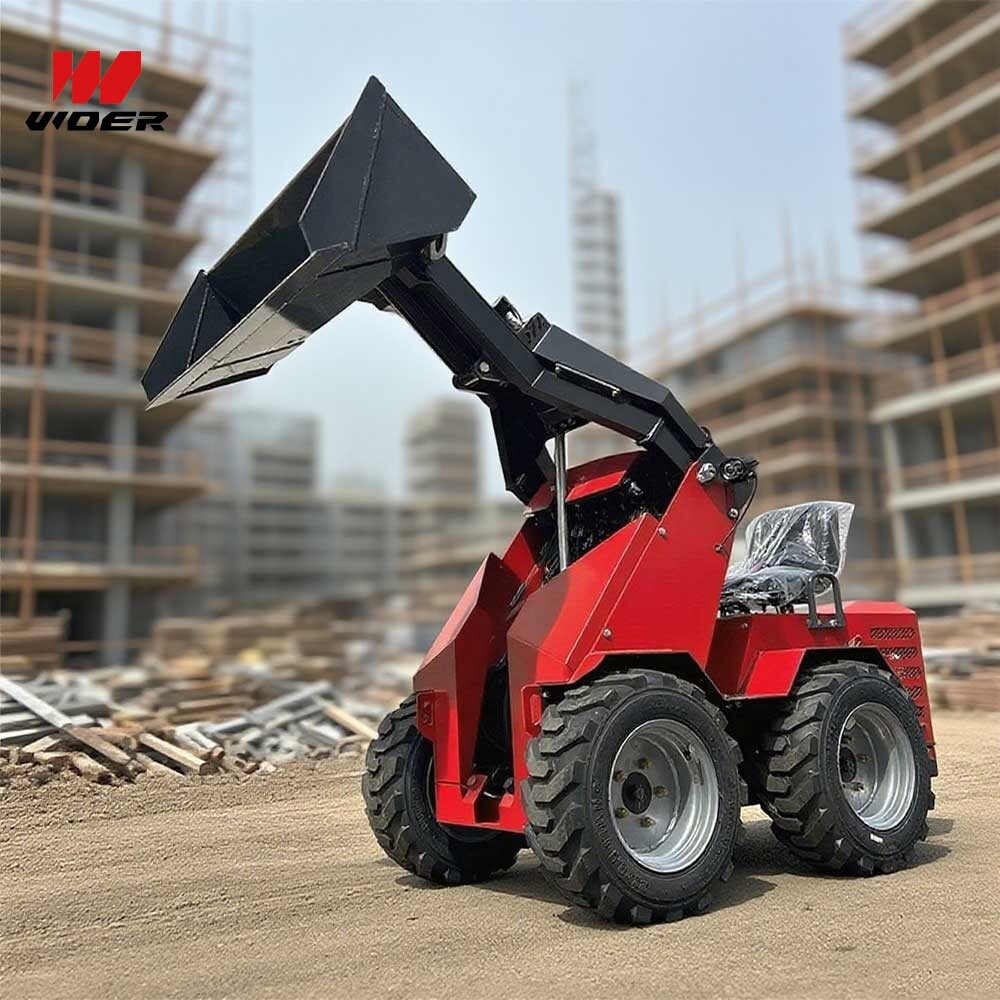Navigation
Contact us
Phone
Message

This guide helps procurement and technical teams evaluate skid steer loader free shipping—covering stand on, walk behind, tracked and diesel crawler models, compliance (EPA), total cost, and operator considerations to support confident purchasing decisions. Early clarity on whether a stand on skid steer loader mini or a mini skid steer diesel crawler loader best fits your workflow will reduce risk and shorten approval cycles.
Overview: What a Mini Steer Skid Loader Is and Why It Matters
Mini steer skid loaders are compact, highly maneuverable machines designed to operate in confined sites typical of wood processing yards, sawmills, and landscaping projects. Variants include the mini skid steer track loader skid steer loader (tracked), mini walk behind skid steer loader (operator walks on or behind), and skid steer loader crawler loader (crawler tracks for soft or uneven ground). For decision makers, choosing the right configuration impacts productivity, site safety, and lifecycle cost.
Key Configurations and Their Value
Stand-on and Walk-behind Models
Stand-on skid units prioritize operator visibility and compact footprint. A stand on skid steer loader mini can speed material handling in congested wood-processing aisles while giving operators quick on/off access. Conversely, the mini walk behind skid steer loader suits tight precision tasks where the operator requires direct control over movement near delicate loads.
Tracked vs Wheeled: Crawler Advantages
Track-equipped machines—often labelled mini crawler skid loaders or mini skid steer track loader skid steer loader—offer superior traction and lower ground pressure. They are ideal for soft, wet, or uneven surfaces typical of outdoor log yards. A skid steer loader crawler loader reduces site damage and increases uptime in adverse conditions compared with wheeled counterparts.
Technical Specifications to Compare
Compliance, Emissions and Standards
Environmental and regulatory compliance is non-negotiable. For U.S. buyers, track skid loader epa and epa skid steer loader requirements determine allowable engines and retrofit needs. Confirm engine certification and request emission test reports. International buyers should verify compliance with relevant standards such as EU Stage V, EN machinery directives, or local equivalents. Also check for ASTM or ISO references for hydraulic and lifting performance where applicable.
Cost, Procurement and Total Cost of Ownership
Initial acquisition is only part of the picture. TCO includes fuel, scheduled maintenance, track or tire replacements, attachments, operator training, and downtime. Mini crawler skid loaders generally carry higher upfront cost but can lower TCO in harsh yards due to less site repair and increased uptime. Consider financing and whether promotions—such as skid steer loader free shipping—are available to lower procurement friction.
Budgeting Checklist
- Compare lifecycle fuel consumption (diesel vs electric).
- Estimate annual maintenance hours and parts cost.
- Include warranty scope and availability of OEM parts.
- Evaluate resale values for mini skid steer track loader skid steer loader models.
Attachments, Versatility and Productivity Gains
Attachments expand machine utility and are critical for ROI. Consider specialized forks, grapples, mulchers and sweepers. For streamlined procurement, evaluate attachment ecosystems and quick-coupler standards. For compatibility and upgradeability, inspect offerings such as Skid Steer Loader Attachments which can transform a single mini steer skid loader into a multi-role asset for handling timber, loading trucks, or clearing debris.
Operation, Safety and Training
Operational safety reduces accident risk and insurance costs. Choose machines with robust operator-protection systems and clear visibility. For stand-on or walk-behind variants, ensure anti-slip platforms and emergency stop controls. Implement operator certification and periodic refresher courses focused on stability, lifting limits, and attachment handling. Operator ergonomics and control layouts can materially affect productivity over long shifts.
Maintenance, Parts and Support Network
Fast access to parts and certified service providers affects uptime. Prioritize vendors with documented spare-part lead times, field service capability, and transparent maintenance schedules. Insist on pre-delivery inspections and comprehensive operator manuals. For mission-critical operations, negotiate service-level agreements that include priority repairs and parts stock for models you choose.
Procurement Tips for Decision Makers
- Define use-case scenarios and duty cycles before selecting a model.
- Require performance data and on-site demo with typical loads.
- Request EPA or equivalent certification documents for the chosen powertrain (track skid loader epa / epa skid steer loader where applicable).
- Compare TCO projections across three-year and five-year horizons.
- Include skid steer loader free shipping options and attachment bundles in vendor negotiations.
Common Missteps and How to Avoid Them
Underestimating ground conditions, overloading machines, and ignoring attachment compatibility are frequent mistakes. Avoid procurement decisions based solely on purchase price; instead, factor in training, downtime, and lifecycle parts availability. If you operate outdoors on uneven surfaces, choose mini crawler skid loaders rather than wheeled units to avoid frequent repairs and site damage.
Case Snapshot: Typical Wood Processing Use
In a medium-sized sawmill, a tracked mini steer skid loader increased log handling throughput by 20% versus a comparable wheeled model, while reducing site rutting and transport delays. The investment in a mini skid steer track loader skid steer loader paid back within 18 months due to reduced downtime and lower subcontractor loading costs.
Why Choose Us — Next Steps
If you need tailored recommendations, our specialists will evaluate site photos, duty cycles, and lifting needs to propose an optimal configuration—whether that’s a compact stand on skid steer loader mini for indoor operations or a rugged mini skid steer diesel crawler loader for outdoor yards. Contact our team to schedule a demo, request technical datasheets, or receive a competitive quote including available promotions and potential skid steer loader free shipping options. Our experts align equipment selection with ASTM/EN guidance and deliver procurement packages that simplify approval and financing.Decision makers: prioritize duty cycle accuracy, regulatory compliance, and post-sale support. With the right mini steer skid loader and attachments, you’ll achieve safer operations, faster throughput, and measurable TCO advantages.

This stunning beach house property is a true oasis, nestled in a serene coastal community with direct access to the beach.
Contact
West Street, Melbourne Victoria 3000 Australia